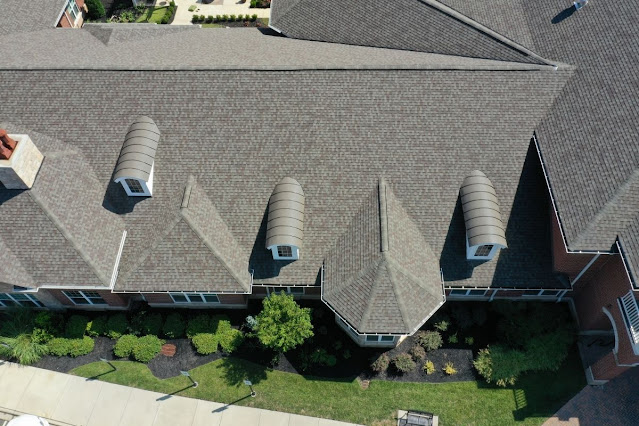Understanding Roof Trusses: Types, Benefits, and Construction Insights
A Complete Guide to the Backbone of Your Roof Structure
Roof trusses are an integral component of modern construction, providing essential support and stability to a building’s roof. Whether you’re designing a home, renovating an existing property, or managing a commercial construction project, understanding roof trusses is crucial. In this guide, we’ll delve into the types of roof trusses, their benefits, and key considerations in their construction.
What Are Roof Trusses?
Roof trusses are engineered frameworks made primarily of wood or steel, designed to support the roof and evenly distribute its weight to the building's walls. Trusses consist of three main components:
- Top Chord: The upper part that supports the roof covering.
- Bottom Chord: The horizontal base that serves as a ceiling joist.
- Web Members: The diagonal and vertical pieces that provide structural integrity.
The design and configuration of these elements make trusses a cost-effective and efficient solution compared to traditional rafters.
Types of Roof Trusses
Choosing the right type of roof trusses depend on the architectural needs of your project. Here are some of the most common types:
1. King Post Truss
The simplest type, king post trusses feature a central vertical post and are ideal for small structures like garages and garden sheds.
- Span Range: Up to 8 meters.
- Cost: Affordable due to minimal material requirements.
2. Queen Post Truss
A variant of the king post, this design has two vertical posts and offers a broader span.
- Span Range: 8-10 meters.
- Best For: Residential homes and medium-sized buildings.
3. Howe Truss
Featuring diagonal web members sloping toward the center, Howe trusses are strong and versatile.
- Span Range: Up to 30 meters.
- Common Usage: Industrial and agricultural buildings.
4. Pratt Truss
Characterized by its web members sloping away from the center, this design is efficient in handling tension and compression forces.
- Span Range: Up to 25 meters.
- Applications: Bridges, factories, and warehouses.
5. Scissor Truss
Designed for vaulted ceilings, scissor trusses create an open and aesthetic interior space.
- Span Range: Varies based on design.
- Best For: Churches, auditoriums, and modern homes.
6. Fink Truss
Widely used in residential construction, the fink truss offers excellent support for medium spans.
- Span Range: 6-12 meters.
- Advantages: Lightweight and economical.
Benefits of Using Roof Trusses
Roof trusses offer numerous advantages that make them the preferred choice in construction:
1. Cost-Effectiveness
Trusses are prefabricated, which reduces material wastage and labor costs. They also require less timber or steel than traditional rafters.
2. Design Flexibility
With various configurations available, trusses can accommodate almost any roof shape, including complex designs like cross-gabled or hip roofs.
3. Strength and Durability
Engineered for maximum strength, trusses can handle significant loads and resist environmental stressors like wind and snow.
4. Time Efficiency
Prefabrication allows for faster installation on-site, reducing construction timelines and labor demands.
5. Environmentally Friendly
Many manufacturers source sustainable materials and adopt energy-efficient practices, making trusses an eco-friendly choice.
Construction Process for Roof Trusses
Installing roof trusses requires careful planning and execution. Here’s an overview of the process:
1. Design and Engineering
The truss design is tailored to the building's dimensions and architectural style. Engineers calculate load requirements, including dead load (roof structure weight), live load (snow or occupants), and wind load.
2. Prefabrication
Trusses are manufactured off-site using precision machinery. This ensures consistency and quality while minimizing material waste.
3. Delivery and Storage
Trusses are transported to the construction site. Proper handling and storage are crucial to prevent damage and warping.
4. Installation
- Step 1: Mark positions on the top plate where trusses will be installed.
- Step 2: Lift and secure the trusses using temporary braces.
- Step 3: Permanently fasten trusses to the top plate with metal connectors or hurricane ties.
- Step 4: Add bracing and sheathing for additional support and stability.
Common Challenges and Solutions in Roof Truss Construction
Despite their advantages, roof trusses can present challenges. Here’s how to address them:
1. Truss Damage During Transport
Solution: Inspect trusses upon delivery and store them on a flat, dry surface to prevent warping or cracking.
2. Alignment Issues During Installation
Solution: Use a laser level and chalk lines to ensure accurate placement.
3. Inadequate Ventilation
Solution: Incorporate ridge vents, soffit vents, or gable vents into the roof design to improve airflow and prevent moisture buildup.
4. Structural Modifications
Altering trusses after installation can compromise integrity.
Solution: Consult a structural engineer before making any modifications.
Maintenance Tips for Roof Trusses
Proper maintenance extends the lifespan of roof trusses and prevents costly repairs:
- Inspect Regularly: Look for signs of damage, such as cracks, corrosion, or sagging.
- Control Moisture: Keep the attic well-ventilated to prevent mold and wood rot.
- Pest Control: Protect wooden trusses from termites and other pests.
- Address Repairs Promptly: Fix any issues as soon as they arise to avoid further damage.
Conclusion
Roof trusses are a cornerstone of modern construction, offering unmatched strength, flexibility, and efficiency. By understanding their types, benefits, and construction process, you can make informed decisions for your project, ensuring a durable and aesthetically pleasing roof structure. Whether you’re a homeowner, builder, or architect, leveraging the advantages of roof trusses will lead to a successful and sustainable construction outcome.
.jpg)



Comments
Post a Comment